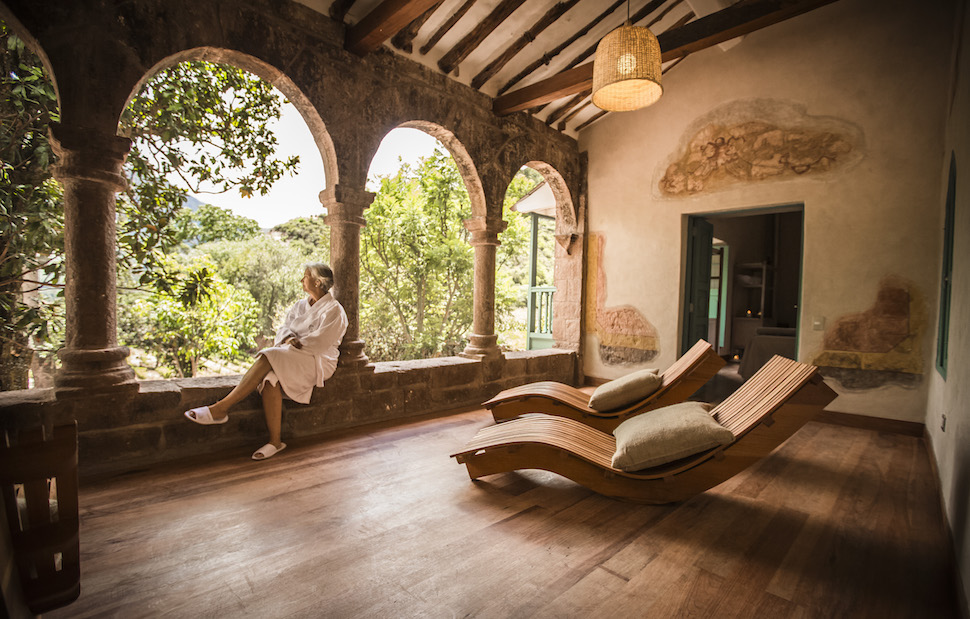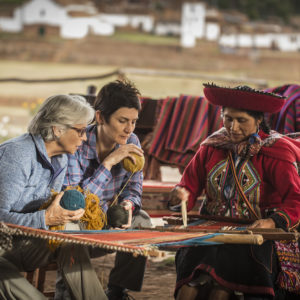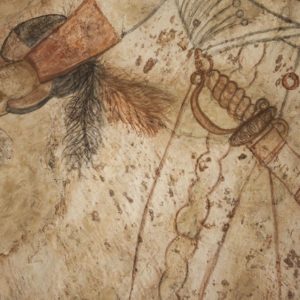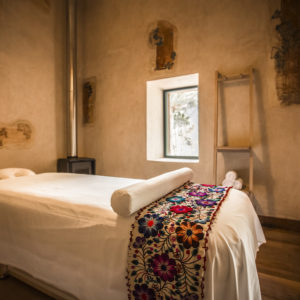
At explora Sacred Valley, less than two hours from Cusco, something special happens every day at happy hour. That’s when the guides pluck you from your bar stool to move you to a table large enough for them to unfold their maps. Outside, as seen through panoramic windows, mystical mountains tower, fields of corn and quinoa waiver in a eucalyptus-scented breeze, and a river gurgles, a cauldron of jade hues. Fueled by a Pisco Sour (or coca tea), you’ll listen as your guide points to various routes that snake across the region’s peaks and valleys, trails that pass through villages, that lead to the heart of a plethora of archeological monuments. Inspired, you’ll choose tomorrow’s adventure, based on your guide’s recommendations—all according to your fitness level, your goals, your desires. On these customized outings, you might be the only person in attendance, or you might join a small group of like-minded, fitness oriented, culturally intrigued vacationers. It varies from day to day. With a list of nearly 50 biking and trekking outings, rated from beginner to expert (including Machu Picchu), all supervised by well-trained guides, explora does something most Sacred Valley resorts don’t do. They lead guests to portions of Peru unknown to most visitors.
 I’d gladly visit Machu Picchu any day of the week, but I forgo it this trip to take advantage of as many of explora’s full -and half-day treks and cultural outings as I can manage. One ramble takes me to the ancient Maras salt flats, another up a steep mountain to some pre-Inca ruins called Pumamarca. On various days, I trudge up a flirty peak called Veroncia in search of llamas, descend from the heights to peer at the mysterious circles of Moray, and visit some expert weavers near the historical city of Chinchero, who show me the plants, herbs, insects, and flowers they use to naturally dye their alpaca wool. One morning, I even go foraging with celebrated chef Virgilio Martinez, founder of Michelin-starred Central in Lima and newly opened Mil, the Sacred Valley’s most coveted reservation. Martinez, a proponent of indigenous products and fare, has collaborated with explora to re-envision the resort’s menus. Revamped, they now offer more Peruvian inspired recipes, dishes that celebrate corn, quinoa, potatoes, chocolate, and alpaca—for example. “Did you know there are hundreds, even thousands, of potato species that grow in the Andes?” Martinez ask me on our outing. I didn’t. But, now I do.
I’d gladly visit Machu Picchu any day of the week, but I forgo it this trip to take advantage of as many of explora’s full -and half-day treks and cultural outings as I can manage. One ramble takes me to the ancient Maras salt flats, another up a steep mountain to some pre-Inca ruins called Pumamarca. On various days, I trudge up a flirty peak called Veroncia in search of llamas, descend from the heights to peer at the mysterious circles of Moray, and visit some expert weavers near the historical city of Chinchero, who show me the plants, herbs, insects, and flowers they use to naturally dye their alpaca wool. One morning, I even go foraging with celebrated chef Virgilio Martinez, founder of Michelin-starred Central in Lima and newly opened Mil, the Sacred Valley’s most coveted reservation. Martinez, a proponent of indigenous products and fare, has collaborated with explora to re-envision the resort’s menus. Revamped, they now offer more Peruvian inspired recipes, dishes that celebrate corn, quinoa, potatoes, chocolate, and alpaca—for example. “Did you know there are hundreds, even thousands, of potato species that grow in the Andes?” Martinez ask me on our outing. I didn’t. But, now I do.
Discovered during the hotel’s development, the Pumacahua Bath House, a 17th-century manor with stunning period frescoes, lies across a cornfield from the hotel.
Near the end of my trip. at happy hour, when my planning guide, J.J. marks up the map to show me everywhere I’ve been. He shakes his head, thoughtfully. “You’ve done a lot,” he says. While I’d have to stay for a month to do everything, it does look like I’ve checked a lot of Sacred Valley boxes. We sit in silence for a moment. I take a sip of my Pisco Sour. “I have an idea,” he says. “Why don’t you take a day off? Go to the spa?” Aware that most every muscle in my body aches, I ponder the possibility. “Would that be bad? I mean there’s so much to do!” He smiles and points to a centuries-old building down a trail across the cornfields. “This spa is a cultural experience in itself,” he says.
 It turns out, he’s right. Discovered during the hotel’s development, the Pumacahua Bath House, a 17th-century manor with stunning period frescoes, lies across a cornfield from the hotel. It was the home of Peruvian independence hero, Matthew Pumacahua, the place where he notoriously met with his concubine. Set amid gardens, beside the river, the manor holds an outdoor pool, jacuzzis, and an herb-infused sauna and hammam area. Explora uses the bath house’s courtyard for special events, such as one I attend with Virgilio Martinez to celebrate his partnership with explora on the new menus. It’s an atmospheric spot to immerse in Sacred Valley vibes.
It turns out, he’s right. Discovered during the hotel’s development, the Pumacahua Bath House, a 17th-century manor with stunning period frescoes, lies across a cornfield from the hotel. It was the home of Peruvian independence hero, Matthew Pumacahua, the place where he notoriously met with his concubine. Set amid gardens, beside the river, the manor holds an outdoor pool, jacuzzis, and an herb-infused sauna and hammam area. Explora uses the bath house’s courtyard for special events, such as one I attend with Virgilio Martinez to celebrate his partnership with explora on the new menus. It’s an atmospheric spot to immerse in Sacred Valley vibes.
Built atop an Inca-era foundation, the refurbished spa, complete with fading 500-year-old frescoes, feels artfully unfinished. Its ancient bones bear witness to history, even as they meld to the landscape. Redone in partnership with the Archeology Institute of Peru, Pumacahua Bath House only deepens a guest’s connection to the location. Focused on massage (which makes sense because most guests overuse their body while at explora), the spa’s treatment menu also includes the use of local herbs and tinctures and a kind of regional reiki. Under the able hands of Rosemary, I get both a spiritual recharge and veritable muscular rebirth. 
At explora marvelous things don’t just happen at happy hour or on the mountain. They happen at the spa, too.
Becca Hensley
Becca Hensley is Editor at Large for Insider's Guide to Spas. Based in Austin, she writes regularly about travel and spas. She believes a good story draws you in like laughter in a crowded room, and challenges you to do it justice. Her work appears regularly in Austin Monthly, Travel Channel, Toronto Star and National Geographic Traveler.